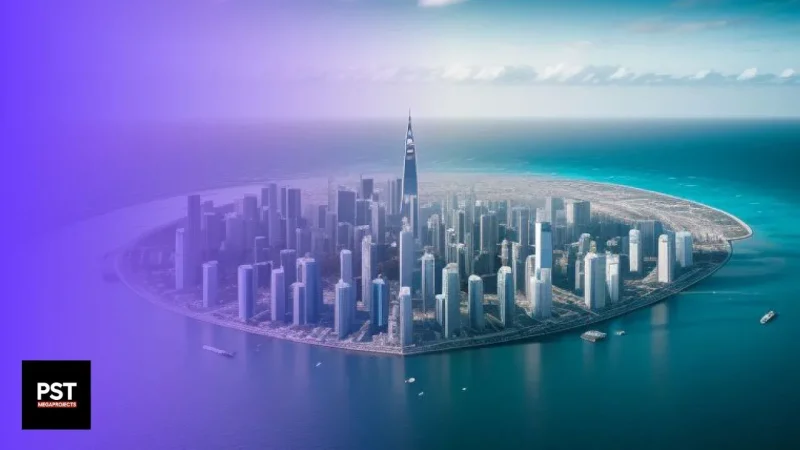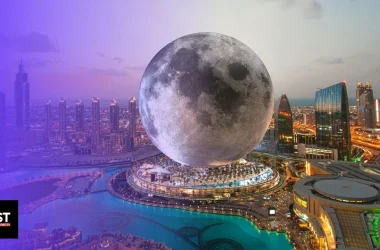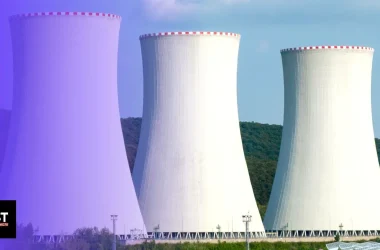As the climate crisis worsens, the earth’s sea levels continue to rise, threatening to sink coastal countries and cities all around the world. One of the countries most in danger is South Korea since it’s surrounded by water with a massive coastline of 2,413 kilometers along three seas.
Faced with a crisis, South Korea’s response is to build an expensive floating metropolis in Busan that could eventually house up to 100,000 people. This city is called Oceanix Busan, and it will be the world’s first-ever floating city. It’s expected to be ready before 2030, just in time for Busan to host World Expo 2030.
Rising Water Levels
A sustainable, floating city built to house people as sea levels rise is a new concept, but it might also be the future.The average global sea level has risen between eight and nine inches, and could rise another 12 inches by 2050. At this rate other floating cities could be built around the world.
At first, the idea of floating cities might seem rather fanciful, but in reality there could be an urgent need for this type of cities in the near future. Two out of every five people in the world live within 62 miles of the coast and 90% of megacities are vulnerable to rising sea levels. From 2050 onwards, the coastal areas where 300 million people live could be flooded yearly. Indonesia is already building a brand new capital, Nusantara, to replace the sinking city of Jakarta as a result.
Rather than sit back and wait for a natural disaster, South Korea’s second-largest city, Busan, is taking steps to prepare. With a population of 3.47 million people, Busan is especially threatened by rising water levels. It’s already South Korea’s largest port city and frequent flooding has made it the perfect location to develop this megaproject.
The Floating City
Oceanix Busan is a floating cit meant to adapt to sea levels as they rise, instead of sinking like normal cities. In theory, this floating city will occupy an area of 60,000 square meters with three hexagonal modules. The city will start with a pilot project of 300 people to collect data and test whether the city is livable and sustainable, if successful, each module will then house 900 people.
This way, the city will act like a living laboratory with initial tests measuring the amount of energy residents consume, how much waste they generate, and whether it’s 100% recyclable. If the city proves to be self-sufficient, it could grow to house 100,000 people.
Clearly, Oceanix Busan is not a complete solution for the city’s population of 3.47 million people. But if its successful, they could expand on this idea to house more people in the future.
But for this floating city to be viable, it needs to provide an ecosystem for all of its residents’ daily needs. Aside from housing and residential areas, Oceanix Busan will include supermarkets and intimate alleyways filled with local food vendors, crafts, and bookstores. The city’s design also includes dedicated research areas for studying technologies that can be applied to other land-scarce coastal cities.
There’s clearly an emphasis on building Oceanix Busan in harmony with nature since each platform is intended to act as a regenerative living surface, creating habitats that filter and clean polluted port water. Its’ design integrates plant-based urban agriculture, water filtration, and harvesting systems. The bridges connecting the three floating platforms to land even have undersides built from Biorock – a material that helps promote the restoration of coral reefs and marine ecosystems. On top of this, the entire city will run only on renewable energy and limit road transportation to EVs.
But this sustainable floating city is too big a project for one firm alone. In fact it is the combined vision of three firms responsible for designing and developing the prototype. Samsung Group’s architectural firm Samoo, the New York based Oceanix which specializes in floating structures, and Bjarke Ingels Group known for Toyota’s Woven City in Japan, are all working together to bring this floating city into reality with help from the United Nations Human Settlements Programme.
Shrouded in Mystery
While all of this sounds good on paper, the truth is that very little is known about this project. For all of its emphasis on environmental consciousness, there are no plans to avoid damaging the marine ecosystem during construction. Even more importantly, the majority of the floating city’s technical aspects aren’t known but that could change since its been in the planning stage for all of 2023.
According to a spokesman for the city, Hyun-Ki, the planning stage would come to a close at the end of the year. He also stated that the project’s developers were still assessing how to build the structures, its economic featability, and a roadmap to obtain all the necessary permits. While Oceanix Busan’s actual cost is still not known, the estimated budget is around $600 million.
What we do know is that construction for Oceanix Busan is expected to start in 2025 and end in 2028. Clearly, this floating city is an attempt to persuade the World Expo committee to allow Busan to host the 2030 World Expo since Busan is currently one of the candidate cities.
World Expo 2030
The World Expo is actually playing a very important role in Oceanix Busan’s creation because Samsung – one of the floating city’s major backers – is planning to reveal its new technologies at World Expo 2030.
This one company represents 20% of South Korea’s entire GDP and likely has the technical prowess and financial resources to get it done. However, Busan is still competing with cities like Rome, Riyadh, and Odessa and without the floating city, it may be diffictult to outshine its competition.
But if Busan is chosen, South Korea has decided to invest a massive $5.73 billion to build the floating city in time for the expo – a 855% increase from its original estimated budget. The government also plans to remodel Busan’s North Port and undertake other development projects in the city if it is chosen to host the 2030 World Expo.
Are Floating Cities the Future?
The truth is, the concept of floating cities such as Oceanix Busan is nothing new. Currently there are a number of megaprojects in the works to do just this, and there have even been initiatives to extend New York into the sea with self-sufficient floating islands. While the concept of New York’s floating cities eventually floated away due to a lack of technical detail, Oceanix Busan could be different.
Some have compared this project to Saudi Arabia’s Oxagon – another floating city being developed as part of NEOM. However, Oceanix Busan is being realized through an agreement with the United Nations to people who used to live in coastal areas who need to relocate.
Is a Floating City Feasible?
But, with so many floating cities being announced and so few details, some might wonder whether floating cities arer even a legitimate solution to rising sea levels. That may depend on how you define a floating city.
If we’re just talking about building structures that float semi-permanently or permanently on the water, we already have the technology, engineering skills, and manufacturing capabilities to build structures that will last more than 50 years.
However, building a floating city in international waters is likely out of the picture based on international maritime law and land-based legal frameworks alone. When discussing floating cities like Oxagon or Oceanix Busan, the most important thing to consider is where they are based. Some, like Oceanix Busan, must be in calm, protected waters close to land.
Considering its location and backing from a powerhouse like Samsung, Oceanix Busan could come to fruition and change the way we see floating cities for years to come. A total of 54 families have already volunteered to live in Oceanix Busan and share their data for three years. Everything from their sleep habits and heart rate to the volume of garbage they generate or the energy they consume will be recorded and used to optimize the city. To speed up the process, a model of people has been chosen and have also agreed to have their lifestyle patterns monitored.
Using this data and new engineering techniques, Oceanix Busan could be completed in time for the World Expo – an achievement that would no doubt highlight South Korea’s place on the cutting edge of technology and innovation. But in light of rising sea levels and quickly sinking cities around the world, floating cities like this one could become the most practical solution for displaced communities.
Disclaimer
Please visit and read our disclaimer here.









